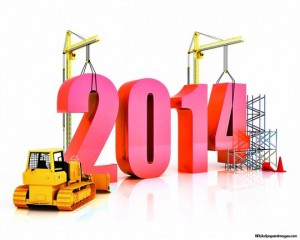 When a new year rolls around, you know what happens: historians highlight the past, pundits ponder the future, and I wonder whether it is all more entertaining patter than productive reflection or context. But we all get into to the spirit of the exercise anyway.
When a new year rolls around, you know what happens: historians highlight the past, pundits ponder the future, and I wonder whether it is all more entertaining patter than productive reflection or context. But we all get into to the spirit of the exercise anyway.
We know changes can occur in nanoseconds that will impact the world forever. And thinking only in one-year increments is kind of silly. Believing we can completely plan out a year at a time is also kind of silly—but again we tend to do it anyway. How many year-end reviews and 2014 planning sessions have you sat through in the last month?
I agree with the famous futurist and business strategist Peter Schwartz of Monitor Group’s Global Business Network (GBN), when he says that uncertainty is the “new normal” in today’s rapidly-changing times.
Recently, I happened upon an interesting report prepared in 2012 by Deutsche Post DHL, the world’s leading mail and logistics group, “Delivering Tomorrow: Logistics 2050.” It is a “dialogue on future trends” that presents five different scenarios of life in 2050:
Scenario 1, Untamed Economy – Impending Collapse — An untamed economy, propelled by unsustainable lifestyles and uncontrolled exploitation of natural resources carries the seeds of its own demise: as massive climate change inches closer, natural disasters occur more often and disrupt supply chains frequently.
Scenario 2, Mega-Efficiency in Megacities — A world in which megacities are both the main drivers and beneficiaries of a paradigm shift towards green growth. To overcome the challenges of expanding urban structures, such as congestion and emissions, megacities become collaboration champions, fostering open trade and global governance models in partnership with supranational institutions. Robotics revolutionize the world of production and services. Consumers switch from product ownership to rent-and-use consumption.
Scenario 3, Customized Lifestyles — A world where individualization and personalized consumption are pervasive. Consumers are empowered to create, design and innovate their own products. This leads to a rise in regional trade streams, with only raw materials and data still flowing globally. Customization and regional production are complemented by decentralized energy infrastructure.
Scenario 4, Paralyzing Protectionism — A world where, triggered by economic hardship, excessive nationalism and protectionist barriers, globalization has been reversed. Resources are scarce, technological development is lagging and economies are in decline. High energy prices and dramatic scarcities lead to international conflicts over resource deposits. Under these circumstances, scant effort is made to reduce greenhouse gas emissions and the world climate is on the path to a 3.5° C temperature increase by the end of the century.
Scenario 5, Global Resilience – Local Adaptation — A world initially characterized by a high level of consumption thanks to cheap, automated production. However, due to accelerated climate change, frequent catastrophes disrupt supply chains and lean production structures, resulting in repeated supply failures for all kinds of goods. The new economic paradigm is distinguished by a shift away from efficiency maximization to vulnerability mitigation and resilience. This radical move towards redundant systems of production and a change from global to regionalized supply chains allows the global economy to better weather troubling times.
It’s fascinating to ponder the thoughts proposed by some of the finest academics, business strategists, and consultants. Will any of these concepts come to pass? Which scenario will most closely reflect reality? It’s impossible to know. My opinion? Probably a combination of potential outcomes, and perhaps some that DHL did not think of, based on regional, political and environmental conditions.
I am certain of one thing, we must prepare as well as we can and create flexible partnerships that can sustain change. The Vested business model is a powerful tool to help navigate through uncertain times and unexpected changes in the marketplace’s “new normal.”
Will you be prepared as you march forward with this year’s annual planning process?
Happy New Year!